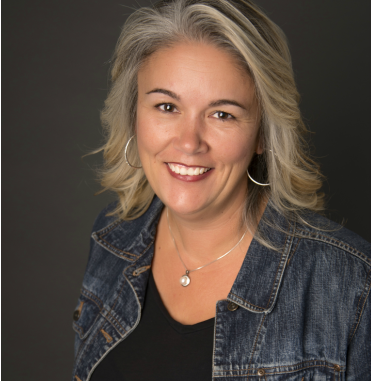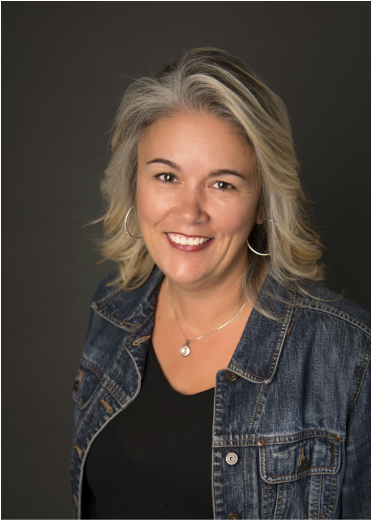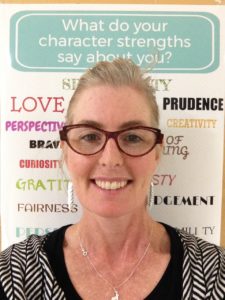
By Sarah Murray, CSL Editorial Board
Caroline Pignat is the two-time Governor Generalʼs Award winning author of seven novels including Egghead, Greener Grass, and The Gospel Truth and Shooter. She lives, writes, and teaches in Ottawa, where she was interviewed by phone for this article.
Sarah Murray: Where do you get your inspiration for writing a novel?
Caroline Pignat: I usually start with a specific time in history or a specific character and go from there. I research a lot and that helps me discover more about the character and potential plot. Right now, I’m digging into the research I did in Ireland a few years ago. I’ve got a whiteboard with photos and maps from 9th century Ireland that help me imagine my way into the time, place and people. I also get inspired by what I’m reading. I don’t choose a book by genre; for me it’s all about the voice and characters.
All of your novels are either set in the present or past. Would you consider writing a dystopian novel set in the future?
I would if I had an idea for it. I enjoyed The Giver when I first read it with my grade 8s, but I don’t have any fresh ideas for future stories. Dystopian seems almost overdone. I’ve heard that some agents and publishers also feel the same and are looking for something fresh and new and I’d say readers are as well. I think that’s why stories like Lesley Livingston’s Valiant trilogy about a female gladiator are so successful.
Do you hide any secrets in your books that only a few people will find? Would you? Like an Easter Egg?
I don’t intentionally put in secrets, but I think that’s a natural result of writing. There are probably things hidden subconsciously in my books that are secret even to me… perhaps my therapist could pick them out! I have had readers discover layers to characters, relationships, and plots that I hadn’t realized or intended. I love it when that happens. It’s so powerful to hear how the story or character resonates with readers because story is really a co-creation: there’s what the author writes and there’s what the readers experience. Each of us add to the story through our imaginations, experiences, and connections.
We read statistics about Canadian teens that state 44% increase in emergency room visits by Canadian teens over the last decade for mental health with 33% increase over the last decade in hospitalization for mental health. Do teens today need to read stories with optimism and hope more than any generation before or are the kids alright?
Story is so, so important to how we understand, relate to, and empathize with one another. The stories we read help us in the story we live. That said, why would you want to read (or write) something that leaves you feeling hopeless or discouraged? Story, at its best, is meant to engage and elevate the reader. It can and should be entertaining, challenging, or even thrilling, but ultimately story draws us into the life, mind, and heart of another. Through a well told story, we feel connected and we gain wisdom and empathy.
I think many teens struggle because they have not yet discovered the truth of their own story. Many take on a story that isn’t theirs and feel the constant pressure and tension of being inauthentic. That is not new to this generation — or even limited to just teenagers. But I do wonder if Social Media has become the fast food of storytelling. Skimming through hundreds of voices, without ever really entering a story must be exhausting and unsatisfying. It’s fine now and then, but you need something richer, something meatier to sustain you. You need to savour and chew on a story to be fed by it.

You have won several prestigious awards for writing including the Governor General’s Award for Children’s Literature in 2009 for Greener Grass and 2015 for The Gospel Truth and most recently the 2017 Red Maple Award for Shooter. How important are these awards to writers and the industry?
Awards are both an affirmation for the authors and a wonderful way to celebrate the best in literature. I regularly turn to shortlists to help me to discover and enjoy many fabulous new voices.
Are awards important to your readers?
I’d say awards like the Red Maple Award matter most to my readers. Programs like the Forest of Reading engage the kids as readers and as voters. They choose the winners and they are very passionate about their selections. If they are familiar with the program, they recognize the stickers on those covers and will go back and read previous finalists and winners, too. But I think kids are most influenced in their book selections through peer recommendation.
What other authors are you friends with, and how do they help you become a better writer? Or is writing a solitary practice?
When I first started writing, I took a writing course offered by Rachna Gilmore. There, I met four other women with whom I met for nearly ten years before my first book was published. Their support helped me persevere when it seemed like I’d never finish Egghead, or sell an article, or survive another rejection letter. Over the years, I’ve met many wonderful people through organizations like SCBWI and CANSCAIP. They were so generous in their advice and support and I learned so much through their workshops and presentations.
The creative process is solitary but there is a great community of Canadian authors for children and teens from coast to coast. I’ve met many through retreats, workshops, literary festivals and book tours. We continue to support, encourage, and celebrate with one another through Facebook, Instagram, and Twitter. We share the same goal — great literature for kids.
As a teacher, I also have the opportunity to work with student authors in the classroom, around the board, and through workshops and conferences. It not only allows me the opportunity to give back by mentoring these young writers but also to be inspired by their energy, enthusiasm, and fresh perspective.
Do you Google yourself? Why or Why not?
I admit, I used to Google myself a lot in the beginning. Confession: I also turned my book to face out at Chapters. I guess they were ways to acknowledge a dream realized. I used to work at Chapters and pictured my book on that space on the “P” shelf many times.
Do you read your book reviews? How do you deal with bad or good ones?
I read reviews published in industry journals such as Quill and Quire, Canadian Review of Materials, Professionally Speaking or by established reviewers such as Helen Kubiw’s Canlit for Little Canadians. My publicists often forward me reviews and we use them in promoting the books. I haven’t seen bad ones, but I don’t go searching for them. I have gotten some insightful feedback from young readers who are quite honest in their letters and comments. Usually they are right and I’ve tried to use that constructive criticism to improve future stories. For example, one grade 7 student asked why I hadn’t given Shane (the bully) a voice in Egghead. Years later, when I wrote The Gospel Truth, I remembered his comment and worked hard to give the antagonist a voice in the novel as well.
We both recently attended the Kids Lit Quiz at Turnbull School. The event is a celebration of childhood classic stories, fairy tales, fables, and current hot YA fiction. What is your favorite childhood book?
I remember reading Heidi by myself for the first time and feeling as though I could ‘see’ what was going on. Because of that memory, that book and historical fiction will always hold a special place for me. I also loved Judy Blume’s voice and wanted to write like her when I was in grade 4. As an adult, one of my favourite children’s books is The Book Thief by Marcus Zusak. I loved his style of writing and the voice of his characters, especially the idea of death narrating the story. I also loved When a Monster Calls by Patrick Ness and Kenneth Oppel’s The Nest. Both moved me and stayed with me long after I read them. I especially admire how they bring the character and reader through something fearful and emotionally challenging but in an age appropriate way. Storytelling at its best!
Do you think the prevalence of iPhones and social media apps like Snapchat and Instagram have impacted the reading habits of today’s youth?
Yes. It is so easy to be distracted by our phones – and it’s not just affecting the youth. Though I use social media to stay in touch with my friends, family, and writing networks, I have to be intentional about when I use it. I think our iPhones can take from our reading time, as I mentioned earlier. But, depending on who the youth are following, it can also be a place to discover and share information about what to read. My grade 7 niece often tells me about books she’s heard about on social media. Still, I do worry that unmonitored and extensive use social media seems to be the lowering age of innocence of children. Maybe that’s just me getting older. Either way it makes me sad.
What is the most difficult part of your artistic process?
I’m going to say it’s the beginning — because that is where I am right now. Actually, I am caught between a few ideas and I am unsure of which one to develop next. More research and publisher deadlines usually help me focus and fully commit to one story. However, for the last two years my deadlines and focus have been for my textbook writing with Pearson’s Growing in Faith series.
If you had to do something differently as a child or teenager to become a better writer as an adult, what would you do?
I think I would have shared my writing more with others sooner. Because my writing was so private (mainly in letters, diaries, and poems) most people didn’t even know I enjoyed or desired to write. I didn’t know anyone who was a writer and never really considered it as a career. Of course that was before the internet … yes, boys and girls, I’m that old. Things might have been different if I’d had the networks, communities, or resources we have today.
That meant that when I did start to write as an adult, I had a lot of learning to do about the craft and the business, but also in developing my identity and confidence as a writer. The Artist’s Way by Julia Cameron was a game changer for me. I’ve listed some other helpful resources on my website.
Many future-ready librarians are turning to technology as a way to engage readers with authors in the virtual space. Is technology bringing you closer to your readership?
Absolutely. It’s a powerful tool when used intentionally. One way I connect virtually is when I’m booked for Skype visits. Many classes download the free study guides I’ve prepared for my novels and will also reach out to me through my website or through Twitter to share photos of their projects and videos (so talented!) and to ask me questions about what they are discussing. It’s so fantastic to be able to connect with them so quickly and easily and I love hearing from them.
Thank You Caroline for kindly sharing your passion for writing YA fiction!
Connect with Caroline at www.carolinepignat.com
Find out more about the Ontario Library Association’s Forest of Reading.
 Sarah Murray is a high school teacher-librarian and English Teacher with over 15 years of experience in the Ottawa Catholic School Board. Her passion is literacy and she is an active advocate for reading in her school community. Her core character strength is the love of learning as she seeks to implement a character strengths approach to both teaching and parenting.
Sarah Murray is a high school teacher-librarian and English Teacher with over 15 years of experience in the Ottawa Catholic School Board. Her passion is literacy and she is an active advocate for reading in her school community. Her core character strength is the love of learning as she seeks to implement a character strengths approach to both teaching and parenting.